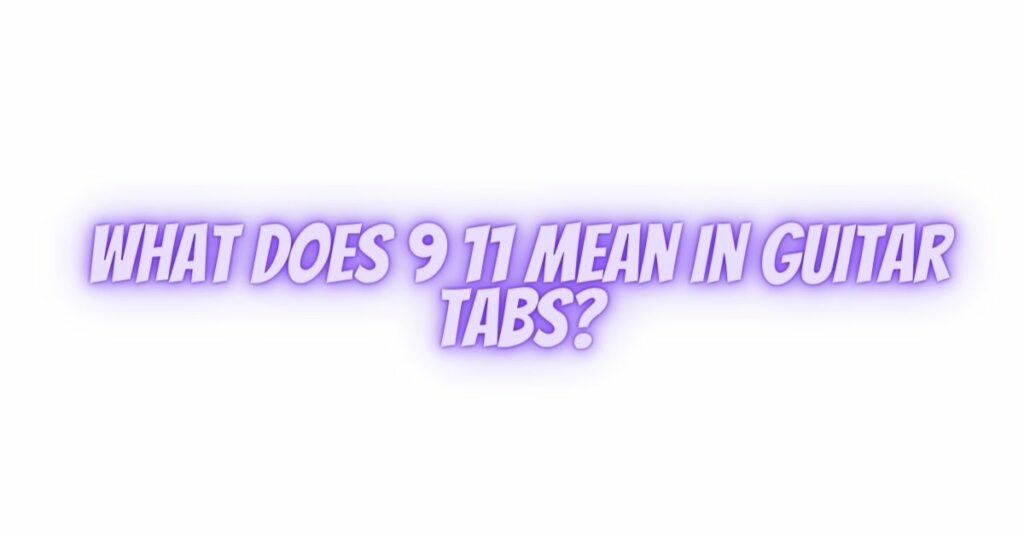In the realm of guitar music and tablature, you may come across various chord notations, and one of the intriguing ones is the “9 11” chord. This notation represents extended chords, often found in jazz, fusion, and contemporary styles. In this comprehensive guide, we will explore what the “9 11” chord signifies in guitar tabs, how to play it, and its role in enhancing your musical expression.
1. Understanding Extended Chords:
Before delving into the meaning of “9 11” in guitar tabs, it’s important to understand the concept of extended chords. Extended chords go beyond the basic triads (major and minor chords) to include additional chord tones. In the context of guitar chords, the numbers 9 and 11 refer to the added intervals, which can bring unique color and complexity to the harmony.
2. Breaking Down the “9 11” Chord:
The “9 11” chord typically involves adding the ninth and eleventh intervals to a basic chord. Let’s break it down step by step:
- The 9th (9): The ninth note in a scale is essentially the same as the second note but played one octave higher. For example, if we’re in the key of C major, the ninth note is D.
- The 11th (11): The eleventh note is equivalent to the fourth note played one octave higher. In C major, the eleventh note is F.
3. “9 11” Chord Diagram:
To play a “9 11” chord, you typically start with a basic chord shape (often a major or minor triad) and add the ninth and eleventh intervals. Here’s an example of an open-position “9 11” chord:
- Place your index finger on the 1st fret of the B string.
- Position your middle finger on the 2nd fret of the G string.
- Place your ring finger on the 2nd fret of the D string.
- Let the high E string (the 1st string) and low E string (the 6th string) remain open and unplayed.
In this example, you are adding the ninth (D) and eleventh (F) notes to the basic chord, creating a richer and more complex harmony.
4. Playing “9 11” Chords Efficiently:
To play “9 11” chords efficiently, consider the following tips:
- Ensure your fingers are pressing the strings firmly and cleanly, avoiding any unintentional muting or buzzing.
- Maintain a relaxed wrist and hand position to allow for smooth chord transitions.
- Strum only the strings that are part of the chord, and avoid playing the uninvolved strings.
5. “9 11” Chords in Music:
“9 11” chords are prevalent in genres such as jazz, fusion, and contemporary music. They introduce unique harmonic flavors and color to compositions, providing a more sophisticated and expressive sound.
6. The Role of “9 11” Chords:
“9 11” chords enhance the harmonic richness of a piece. They offer guitarists a broader palette of tonal possibilities to explore, which can be particularly useful for soloing, chord progressions, and improvisation.
7. Conclusion:
The “9 11” chord is a captivating addition to a guitarist’s repertoire, introducing extended harmony and complexity to your music. While it is commonly found in jazz and fusion genres, “9 11” chords can be used creatively in various musical contexts to add depth and expressiveness to your compositions. By understanding the concept, practicing the chord shapes, and experimenting with their application, you can elevate your guitar playing to new heights and infuse your music with captivating and intricate harmonies.


